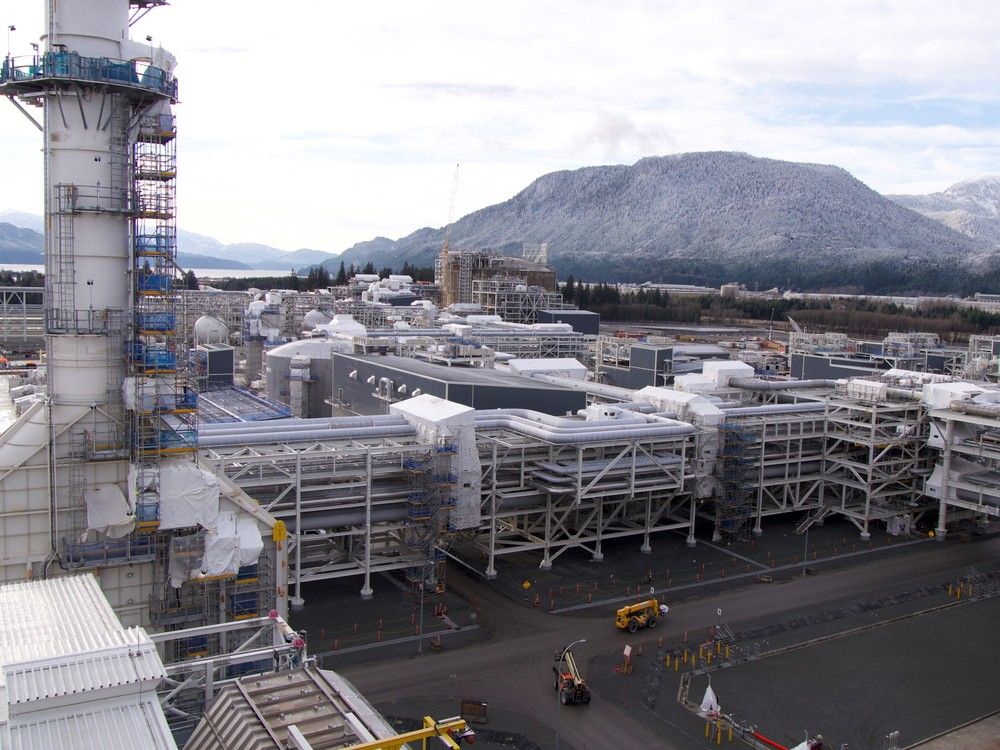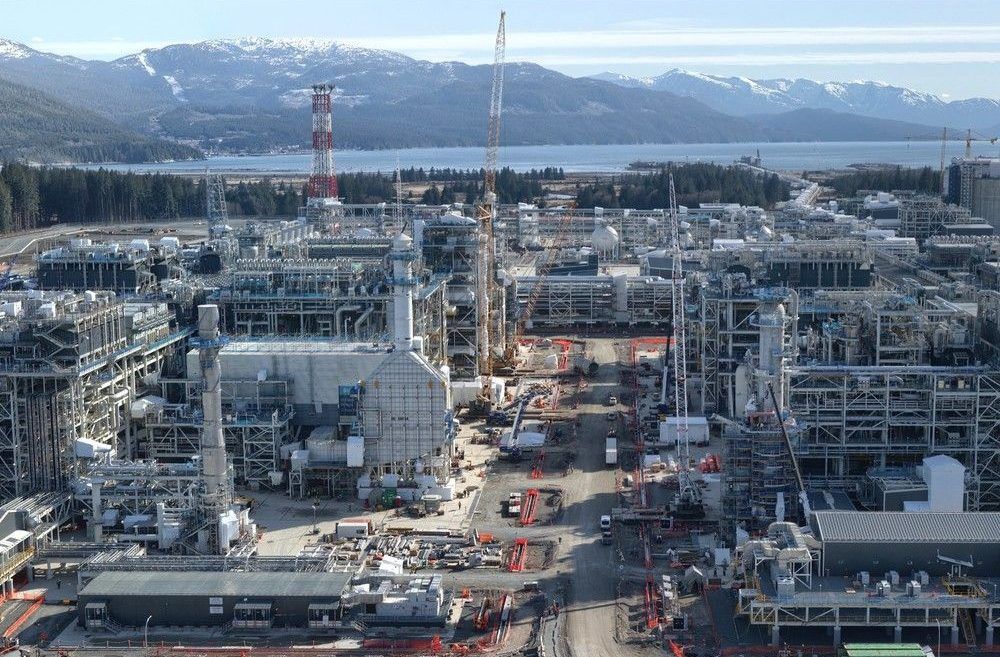
The first phase of Kitimat’s $40 billion LNG Canada export terminal marks the completion of its first production run, with its first shipment of natural gas expected in the coming days.
A decade after the project first received regulatory approval, Premier David Eby said Wednesday the shipment heralds the largest private sector investment in B.C. history.
“It will result in a 0.4 per cent increase in the nation’s GDP, just this project alone. It will bring billions of dollars in benefits to British Columbia and to the nation,” he said in Vancouver.
The project has been touted by the government and the industry as a way to support rural communities in northeastern B.C. and northwestern Alberta through the development of the Montney formation, which is estimated to hold roughly 90 billion barrels worth of natural gas, and reduce global emissions for countries reliant on coal.
LNG Canada and its supply pipeline, Coastal GasLink, have been opposed by environmental advocates and some First Nations who argue the fracking needed to develop natural gas releases methane, a greenhouse gas that is 28 times more potent that carbon dioxide.
Here are five things you need to know:
When is the first shipment?
LNG Canada announced its first production of LNG on Monday and the Gitxaała Territorial Management Agency told CFNR Network that the first shipment is expected to transit through their territory in the coming days.
The project is expected to export 14 million tonnes of natural gas annually, with the potential for export levels of up to 28 million tonnes each year if Phase 2 of LNG Canada goes ahead.
The shipments are primarily to Japan and South Korea, but could also be sent to Vietnam and China.
“The benefit for the Northwest and for the province is significant,” Energy Minister Adrian Dix said.
“I think British Columbia has a great story to tell on the quality of our product on emissions, on the value of our natural gas and I think that puts us in a good position.”

What are the economic benefits?
B.C. estimates that LNG Canada could be $575 million annually for 40 years, for a total of as much as $23 billion.
The site as it exists now will sustain 300 permanent jobs, mostly residents from Kitimat and the surrounding area.
Phil Germuth, mayor of Kitimat, said the second phase of LNG Canada could create an additional 100 to 150 jobs.
“This project has really put Kitimat on the map,” he said.
“We’re looking for other opportunities, whatever that may be. I think we clearly have a new federal government now that’s really wanting to capitalize on our resources. So we hope to be a part of that.”
What is the second phase of LNG Canada?
The second phase of LNG Canada is awaiting a final investment decision from the consortium of Shell, Petronas PetroChina, Mitsubishi Corporation and the Korea Gas Corp that owns the project. The project has received all necessary federal and provincial permitting and approvals.
The remaining issue is whether there will be enough demand for the expansion and if it’s financially viable as the global supply of LNG is rapidly increasing with countries such as Qatar and the U.S. building their supply.
Clark Williams-Derry, an energy finance analyst at the Institute for Energy Economics and Financial Analysis, said there is a “glut” in the market that makes it difficult for companies invested in LNG Canada to make money on new projects.
He also said that Canada getting into the LNG market could lead to spikes in local prices as demand increases.
“You may have a case where Shell is losing money, and consumers are paying higher prices, and the only people who are making any benefit are the royalties that go to the government,” he said.
What other LNG projects are in the works?
There are five LNG projects in B.C. at various stages of development, with LNG Canada the largest and closest to being in operation.
The others include the Ksi Lisims LNG project, a partnership between the Nisga’a First Nation and Western LNG, Woodfibre LNG near Squamish and Cedar LNG, majority owned by the Haisla First Nation.
The final project is the second expansion of the Tilbury LNG facility in Delta owned by FortisBC.
The LNG projects are expected to produce 47.5 million tonnes annually and the government projects that before all the projects are completed, natural gas revenues could double to $1.4 billion by 2027.
What are the environmental impacts?
Dix said LNG Canada’s product is less carbon intensive than its competitors, adding it will release 0.5 tonnes of carbon dioxide equivalent per ton of LNG, compared to the international average of 1.5 tonnes of CO2 equivalent.
Green interim leader Jeremy Valeriote said the problem is there is no data on how much methane could be released into the atmosphere from LNG Canada and there is very little discussion of the potential health impacts of flaring, including respiratory diseases.
Valeriote said B.C. claims to have a study proving that LNG is better than using coal, but government has yet to produce it.
“Replacing coal with LNG is like replacing smoking with vaping,” he said. “We don’t really know the effects to overall health, but it’s only a tiny, tiny degree of better, and it still has the same detrimental effects.”
Williams-Derry also said there is evidence showing that LNG isn’t working to replace coal in countries such as China and India, with gas providing only three per cent of their power for much of the last 10 years.